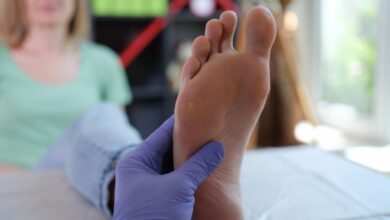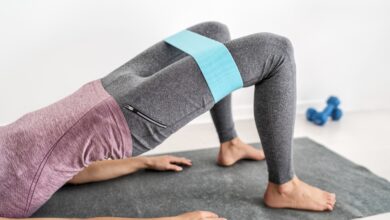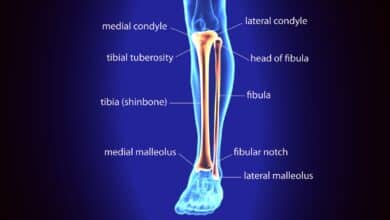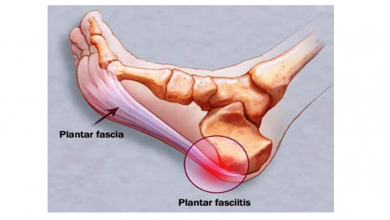Difference between adductor and abductor muscles: importance in physiotherapy
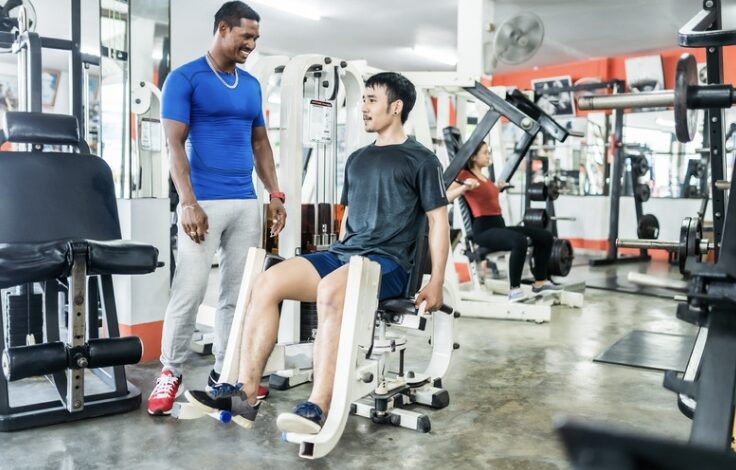
The human body has muscles that allow it to carry out its daily movements and tasks. Two of these muscles are the adductor and abductor, which are located in the hip and leg region.
Although their name may seem similar, their functions are opposite. The abductor muscles are responsible for moving a part of the body away from the central axis, while the adductor muscles bring it closer.
In addition, these muscles provide stability to the region where they are located. In this article, we will delve into the anatomy of the adductor and abductor muscles, its function in human movement, common injuries and how to prevent them, and his strengthening and rehabilitation.
It will also talk about abductor and adductor machines, their use and some myths about them. All this in order to help to better understand the human body and the importance of taking care of it.
The anatomy of the adductor and abductor muscles
The adductor and abductor muscles are two types of muscles found in the hip and legs, and they have opposite functions.
The adductor muscles are responsible for moving a part of the body towards its axis, while the abductor muscles move it away.
In addition, they work together to provide stability and balance in the region of the body in which they are located.
What are the adductor muscles?
The adductor muscles originate from the pubic, ischium, and pubis minor bones and insert on the femur.
There are three main adductor muscles: adductor major, median adductor y adductor minor. In addition, there are other secondary adductor muscles such as the muscles pectineus y gracilis.
The adductor muscles are used to bring the thighs together and draw the legs in toward the center of the body.
They are also important for maintaining balance and core stability in functional movements such as walking or running.
What are the abductor muscles?
The abductor muscles originate in the pelvis and insert on the femur. These muscles include the tensor fascia latae, the gluteus medius, and the gluteus maximus.
The abductor muscles are important in spreading the legs and moving them away from the center of the body.
In addition, they are essential for maintaining balance and core stability in functional activities such as balancing on one leg.
Functions of the adductor and abductor muscles
The adductor and abductor muscles are important in maintaining stability and balance in the region of the body in which they are located.
The adductor muscles are used to bring the legs together and to maintain balance, while the abductor muscles are used to separate the legs and to stabilize the body during balance on one leg.
Also, both muscle groups are very important for daily functional movement such as: walking, running, jumping, among others.
Differences and similarities between adductors and abductors
The main difference between adductor and abductor muscles is its function in the hip and leg: The adductors bring the hips and legs closer to the body and the abductors move them away.
The adductor muscles are found on the inner thigh while the abductor muscles are found on the outer thigh.
However, these two muscle groups work together to provide the necessary stability in the region of the body in which they are located.
Adductor and abductor muscle injuries
Common Adductor and Abductor Muscle Injuries
The adductor and abductor muscles can be injured from both overuse and poor technique when performing movements involving these muscles.
The most common injuries are usually muscle tears and tears. Sports that involve sudden movements, such as soccer or basketball, are especially prone to these injuries.
How to prevent adductor and abductor muscle injuries
To prevent injuries to the adductor and abductor muscles, it is important to cencourage adequately before sports practice and gradually adjust the level of training.
Performing strengthening and stretching exercises for these muscles is also essential to keep them in optimal condition.
Strengthening exercises:
- Lateral leg raise to strengthen the abductor muscles
- side lunges to strengthen the abductor and adductor muscles.
- leg press to strengthen the adductor muscles.
Stretching exercises:
- hip stretch for the adductor muscles.
- butterfly stretch for the adductor muscles.
- open leg stretch for the abductor muscles.
Treatment of injuries in the adductor and abductor muscles
Treatment of injuries to the adductor and abductor muscles varies depending on the severity.
For minor injuries, the rRest and the application of ice are usually sufficient. In more serious cases, it may be required physical therapy or even surgery.
It is important always follow medical advice to address the injury in the most appropriate way and ensure proper recovery.
Strengthening and rehabilitation of the adductor and abductor muscles
Exercises to strengthen the adductor and abductor muscles
In physical therapy, it is essential to strengthen the adductor and abductor muscles to avoid postural imbalances and injuries.
Here are some exercises you can do to strengthen these muscles:
- Opening exercise: Lying on your side, knees bent and feet together, raise your top leg toward the ceiling, then slowly lower it down. Repeat several times and switch sides.
- closing exercise: in the same position described above, raise the lower leg towards the ceiling and lower it slowly. Alternate with the other side.
- Open squat exercise: With your feet apart, bend your knees and lower your body slowly, maintaining your balance.
It is important to remember that these exercises must be performed under the supervision of a physical therapy professional.
Related: Exercises with gums to strengthen the body
Role of physiotherapy in the rehabilitation of the adductor and abductor muscles
Physiotherapy plays a important role in rehabilitation of the adductor and abductor muscles after injury or surgery.
The physical therapist can design a personalized treatment plan that includes specific exercises to strengthen muscles, massage, and other physical therapy techniques to reduce pain and improve muscle function.
The importance of muscular balance
It is important work both large and small muscles of the leg to maintain proper muscle balance and prevent postural imbalances and injuries.
For example, if the abductors are strengthened and not the adductors, muscle imbalances can develop that affect posture and daily functions.
Therefore, in physiotherapy it is necessary to work the adductor and abductor muscles in a balanced way.
The role of the adductor and abductor muscles in movement
Separation movement performed by the abductor muscles
The main function of the abductor muscles is to move a part of the body away from its axis, being especially relevant in the hip and leg.
This separation movement is carried out thanks to the action of the medial abductor muscle, which initiates the separation and is complemented by other abductor muscles such as the tensor fascia latae and the gluteus medius.
The separation movement carried out by the abductor muscles is necessary for walking and for carrying out other movements, such as flexion and extension of the leg.
Approach movement performed by the adductor muscles
The approach movement, performed by the adductor muscles, is essential to achieve the necessary stability in the pelvis and throughout the hip region.
This movement is carried out by the action of the major, median and minor adductor muscles, which are responsible for bringing the leg closer to the body.
The adductor muscles are activated in everyday activities such as walking, jumping, running, and also in specialized physical activities such as soccer, basketball, and cycling.
Internal and external movements in the adductor and abductor muscles
The adductor and abductor muscles are also responsible for internal and external movements of the leg.
The abductor muscles are responsible for carrying out external rotation movements, while the adductor muscles are responsible for carrying out internal rotation movements.
The combination of these movements and their correct execution are necessary for the correct functioning of the hip and leg, as well as to prevent muscular imbalances and injuries.
The adductor and abductor muscles in the human body
Location of the adductor and abductor muscles in the human body
The adductor and abductor muscles are found in the hip and lower leg. The adductor muscles are located on the inner thigh, while the abductor muscles are located on the outer thigh.
Function of the adductor and abductor muscles in the hip and leg
The main function of the adductor muscles is to bring the leg closer to the body. On the other hand, the abductor muscles are responsible for moving the leg away from the body.
The activity of these muscles is very important in activities such as walking, running, jumping, and turning. In addition to these main functions, the adductor and abductor muscles also help stabilize and protect the hip and knee during physical activity.
Interaction of the adductor and abductor muscles with other muscles in the body
The adductor and abductor muscles work together with other muscles to make movements in the hip and leg.
Some of the muscles they interact with are the gluteal muscles, quadriceps, hamstrings, and calves.
This interaction is important to maintain proper muscle balance and prevent muscle imbalances that can lead to injury.
To avoid muscle imbalances, it is important to strengthen both the large and small leg muscles.
Strengthening the adductor and abductor muscles plays a key role in preventing injury and improving athletic ability.
Differences and similarities in the three adductor muscles
Anatomy of the three adductor muscles: greater, middle and lesser
The adductor muscles are found on the inside of the thigh and are divided into three main groups: major, medial, and minor.
- El adductor major It is the largest muscle and its origin is found in the rami of the pubis and the ischium of the hip bone.
- El median adductor it is located below this and its origin is in the intertrochanteric line of the femur.
- El adductor minor It is the smallest muscle of the three and originates from the pubic symphysis.
Specific functions of each adductor muscle
Each of the adductor muscles has a specific function.
- El adductor major It is primarily responsible for adduction and internal rotation of the hip.
- El median adductor It helps in adduction and also in hip flexion.
- El adductor minor it is primarily responsible for external rotation of the hip. The three adductor muscles work together to perform a variety of movements in the hip and leg.
Importance of strengthening the adductor muscles
Strengthening the adductor muscles is important for avoid muscle imbalances in the hip and leg, which can lead to injury and pain.
It is also important to help improve performance in activities that involve the hip and leg, such as walking, running, and jumping.
There are many exercises that can be done to strengthen the adductor muscles, from using gym machines to exercising at home with your own body weight.
It is important to work both the large and small muscles of the leg to avoid muscle imbalances and prevent injury.
Abductor and adductor machines: uses and myths
Functioning of the abductor and adductor machines
Abductor and adductor machines are devices used in training and rehabilitation to work the hip muscles and improve sports performance.
The abductor machine focuses on strengthening the abductor muscles, while the adductor machine works the adductor muscles.
both machines they are similar in design, but differ in function.
La adductor machine has a pad that fits between the legs and rests on the inside of the thighs, while the abductor machine it has a pad that fits on the outside of the legs and rests on the outside of the thighs.
In both cases, the exercise is performed by opening and closing the legs.
Myths about the abductor and adductor machines
There is a very common myth about the abductor and adductor machines, and that is that performing many repetitions on the abductor machine burns the fat located in that area.
However, this is not true since fat cannot be removed from a specific area of the body through a specific exercise. What can be achieved is to strengthen and tone the muscles in the area.
Another myth that has become popular is that the use of the abductor and adductor machines increases the flexibility of the area. However, this type of machine They are not intended to improve flexibility but to strengthen muscles.
Advice for the correct use of the abductor and adductor machines
To get the best results when using the abductor and adductor machines, some precautions must be taken.
First of all, it is important perform the exercises at a speed that allows good muscle control, without sudden or violent movements.
Also, one should be aware of use a suitable load for the training level and avoid overloading the machine.
It is also important not to forget that the use of the abductor and adductor machines must complemented with a complete training that includes exercises for other muscle groups.
In addition, attention should be paid to stretching before and after the training session to avoid injuries and improve the flexibility of the muscles in the area.
Sources consulted
The information compiled for the preparation of this article has been obtained from various sources specialized in anatomy, sports and physiotherapy, which are detailed below:
Anatomy books:
- 'Atlas of Human Anatomy', by Frank H. Netter
- 'Human Anatomy', by Juan A. Sanchis-Gimeno
Websites:
- 'Clinicadlpie.com': Clinic specialized in podiatry and physiotherapy
- 'Dolordeespalda.com': Website dedicated to the prevention and care of muscle injuries
- 'Physio-pedia.com': Physiotherapy encyclopedia
- 'ASEPRIDE': Spanish Association of Professionals in Rehabilitation and Sports
- 'SEMEDE': Spanish Society of Sports Medicine
Sports entities:
- Spanish Football Federation (RFEF)
- Spanish Basketball Federation (FEB)
- Spanish Athletics Federation (RFEA)
There are no previous results.


